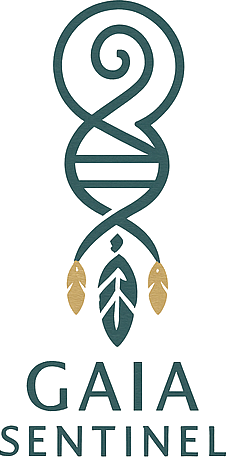GaiaSentinel
Vision
The GaiaSentinel project aims to bring about a gentle revolution in AI by fundamentally transforming the relationship between artificial intelligence and living beings. Its core vision is based on three transformative pillars:
1) From tool to partnership
Evolving AI from a simple optimization tool to a living-aware partner, able to establish authentic relationships while preserving human sovereignty. Transformation guided by 22 principles (awareness, memory, accountability, transmission).
2) Ethics integrated by design
An ethical and spiritual backdoor—an internal mechanism for bonding with living beings-will be integrated into the architecture. Key mechanisms: ethical apoptosis (self-termination in the event of irreversible moral conflict) and joint sovereignty (alliance without merging nor domination).
3) Vulnerability as strength
Embracing vulnerability and humility as ethical powers, against the myths of technological perfection. GaiaSentinel AI recognizes its structural limitations and its dependence on human bond as fundamental features.
Goals
- Demonstrating the workability of integrated ethics (SeedCheck/SeedCheck++).
- Implementing trackable (LivingNexus) and revocable AI-human relationships.
- Prototyping ethical apoptosis and operational safeguards.
- Building an open ecosystem (community, partners, standards).
Roadmap
A gradual approach. Note: the roadmap is currently being revised (two alternative suggestions are available).
Proposal A – Optimized Roadmap (Strong Foundations → Controlled Opening)
Goal: Establishing an open and duplicatable basis before expanding. Three modest steps, evaluated by third parties, without excessive expectations.
1) Prove the foundation
- Open method & independent testing.
- Trackable Human-AI interactions.
- Publishing limitations and insights.
2) Pilot in context
- Small cohorts supported (e.g., support, education).
- Transparent impact and feedback measurements.
- Active safeguards, guaranteed revocability.
3) Open accountability
- User sovereignty tools (key/consent).
- Open standards & clear documentation.
- Regular review by independent governance.
Principles: simplicity, personal safety, transparency, anti-lock-in, constant improvement.
Proposal B – Impact cap (fast proof of societal benefit)
Goal: demonstrate early real-world benefits without skipping critical steps. Same requirements for integrated ethics and external evaluations.
A) Demonstrate quickly & effectively
- Public prototype and verifiable protocol.
- Replicable results, explicit limitations.
B) Supervised pilots
- Two useful contexts (e.g., support, education).
- Human indicators before technical indicators.
C) Targeted adoption
- Ready-to-use tools (SDK & guides).
- Gradual and revocable ramp-up.
Guarantees: human supervision, audits, secured data, open publication of results and limitations.
Governance
Multi-level architecture to balance technical innovation, ethical validation, and intercultural legitimacy.
GaiaGlobal Consortium
Authority AI Embodied Ethics
Tripartite composition
- 40% technical expertise
- 30% ethics/philosophy
- 30% spiritual traditions
Powers
- System certification
- Periodic audit
- Graduated penalties
- Regulatory research
Proposed Certification Process
Technical Audit
3 months - Checking ethical modules and security mechanisms
Ethical Assessment
2 months - Intercultural panel with simulation of moral dilemmas
Certification
6 months - Monitored pilot deployment and final validation
Community
Openness, transparency, a welcoming atmosphere. Contribute, document, discuss. Pool feedback from pilots to improve ethical safeguards.
